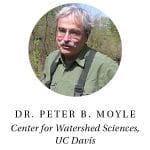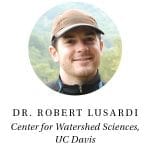- Filter by
- Categories
- Tags
- Authors
- Show all
- All
- _proof
- 50th
- Action Alert
- Bay Area
- Bay Area
- Blue Ribbon Waters
- California Water
- CalTrout People
- CalTrout Promo
- Campaigns
- Central Valley
- Central Valley
- Dams
- Diversity Equity Inclusion
- Eel River
- Event
- Events
- Featured
- Featured Watersheds
- Field Notes
- Fly Fishing
- From CalTrout
- Fun
- Hat Creek Restoration Project
- Imperiled Native Trout
- Initiatives
- Integrate Wild Fish & Working Landscapes
- Integrate Wild Fish & Working Landscapes
- Integrate Wild Fish and Working Landscapes
- Invasive Species
- Job Postings
- Key Initiative
- Klamath River Restoration
- Legal & Policy
- Legislation
- Migration Matters
- Mount Shasta / Klamath
- Mt. Lassen
- Mt. Lassen
- Mt. Shasta/Klamath
- News
- North Coast
- North Coast
- Podcast
- Podcast
- Press Releases
- Protect The Best
- Protect the Best
- Protect The Best
- Protect The Best
- Reconnect Habitat
- Reconnect Habitat
- Reconnect Habitat
- Regions
- Restore Estuaries
- Restore Estuaries
- Restore Estuaries
- Science
- Science Into Action
- SCRSC
- Sierra Headwaters
- Sierra Headwaters
- SOS Report
- South Coast
- South Coast
- Steelhead & Salmon
- Steward Source Water Areas
- Steward Source Water Areas
- Streamkeeper's Blog
- Trout
- Uncategorized
- video
- Voices of the Watershed
- Water Talks
- Women of CalTrout
- Youth
- All
- #5RC
- #cadrought
- #cawater
- #climatechange
- #ditchdams
- #endangeredspecies
- #esa
- #FiveRiversChallenge
- #fly fishing
- #flyfishing
- #hatcreeek
- #HatCreek
- #hcrp
- #hsd
- #hsd #flyfishing
- #humboldtsteelheaddays
- #keepemwet
- #klamathbasin
- #meadowsmatter
- #MER2014
- #salmon
- #searsville
- #WSFF #savethesmith
- 2 percent
- 2% for trout
- 2012 casting call
- 2012 snapshot day
- 2017
- 2020
- 30x30
- 30x30 Partnership
- 4-star
- 40th anniversary
- 4xFar
- 5 Rivers Challenge
- 50
- 50 years
- 50th
- 50th anniversary
- 5937
- A Conservation Strategy National Forests In The Sierra Nevada
- AB 120
- AB 1613
- ab 1961
- AB 2402
- ab 2480
- AB 2528
- ab 7
- ab120
- AB1961
- AB2451
- act
- Action
- Action Alert
- active alert
- Ada Folwer
- Ada Fowler
- adam bagger
- Adult Salmonid Sonar Monitoring Program
- advocacy
- agriculture
- alameda creek
- Alan Roesberry
- Allison dodds
- Amanda Cooper
- an entirely synthetic fish
- Analise Rivero
- anders halverson
- andrew braugh
- Andrew Rypel
- angling for all
- anniversary
- annual report
- apparel
- Aquatic Adventures
- aquifer
- art
- art teter
- article
- artist
- assemblymember richard bloom
- asskicking steelhead
- atmospheric rivers
- audit
- award
- baduwat
- bagley fire
- bark beetle
- barry yoeman
- battle creek
- bay area
- bay area youth fly fishers
- BDCP
- bear creek
- beyond searsville dam
- biden
- big springs creek
- bill
- bill quinn
- bill schaadt
- birds
- Black Lives Matter
- Board
- board chair
- board of directors
- boat inspections
- bob quigley
- Bolivia
- bollibokka
- bond
- BOR
- boy scouts
- brian johnson
- brown folks fishing
- bruce babbitt
- budget
- burney
- butte creek
- butte creek salmon
- byron leydecker
- Cachuma
- california
- California Academy of Sciences
- california chinook salmon
- California Clean Water and Safe Parks Act
- california coastal commission
- california coho salmon
- california dam removal
- california delta
- california drought
- california fish and game code
- California Fish Passage Forum
- california fly fishing
- california fly fishing guides
- california golden trout
- california hatchery review
- california heritage and wild trout
- California Natural Resources Agency
- california salmon
- california snowpack
- california state capitol
- california steelhead recovery
- california suction dredge mining regulations
- california tailwaters fisheries
- california trout
- california water
- california water blog
- california water wars
- california weather
- caltrou
- caltrout
- CalTrout 50th
- caltrout board
- CalTrout board chair
- CalTrout founder
- caltrout gala
- caltrout john paul award
- CalTrout member
- CalTrout staff
- caltrout year in pictures
- Candice Meneghin
- cannabis
- Cannibal Island
- cantara
- cantara loop spill
- cantara spill
- cape horn dam
- capitol
- Capitol Corner
- carbon
- carbon flats bridge
- carbon sequestration
- carbon storage
- cardoza
- career
- cascade mountains
- casting
- casting call
- castle lake
- catch and release
- catching big trout
- CCC coho salmon
- CDFW
- CDFW Regulations
- Cedar Creek
- Center for watershed Sciences
- Central California
- Central California Coast coho salmon
- central california steelhead
- central valley
- central valley floodplains
- Central Valley Joint Venture
- central valley salmon
- Central Valley Salmon Partnership
- CEQA
- charity
- charity navigator
- chemical spill
- chinook
- chinook salmon
- christine walker
- chuck bonham
- chumash village
- clean water
- Clean Water Act
- clean water and safe parks act
- clearwater lodge
- Cliff Feldheim
- climate adaptation
- climate change
- climate change los angeles
- clothing
- coast
- Cochran Creek
- coho
- coho recovery hearing
- coho salmon
- coho salmon recovery
- coho salmon restoration
- committee appointment
- committee of two million
- communications
- competition
- condit dam
- Conference
- congress
- Congressman Huffman
- conservation
- conservationist
- contest
- copco
- coronavirus
- Covid
- craig nielsen
- Craigs Corner
- creek
- crowley lake
- crystal geyser
- cultivation
- curtis knight
- CVSHP
- dam
- dam building
- dam removal
- damon goodman
- dams
- Dams Out
- damsout
- darren mierau
- darren mireau
- dave neal
- deij
- Delta
- department of fish and game
- Department of Water Resources
- derailment
- Diana Jacobs
- DIDSON
- diversity
- dog days
- donate
- donations
- Donor
- Donor Database
- Donor Profile
- Dr. Gabe Rossi
- Dr. Jeff Mount
- dr. peter moyle
- Drew Bassak
- Drew Braugh
- drinking water
- drought
- Ducks Unlimited
- DWR
- east bay
- eastern sierra region
- ecological traps
- economy
- Ecosystem Fellow
- education
- eel river
- Eel River Action Plan
- Eel River Forum
- Eel River Science Program
- eel river symposium
- Elise Ruiz
- Elk River
- Elk River Recovery Plan
- elwha river
- elwha river dam removal
- employees
- endangered
- Endangered Species Act
- enough is enough
- environment
- environmental
- environmental films
- environmental impact report
- environmental policy
- EPA
- equity
- Eric Huber
- estuaries
- estuary
- event
- events
- Executive Director
- executive order
- f3t
- Fall
- fall fly fishing tips
- fall river
- fall river conservancy
- fall river flows
- fall river restoration
- family
- farms
- feather river salmon
- federation of fly fishers
- Felicia Marcus
- Fellow
- felt soul media
- FERC
- ferc dams hydropower government administration steelhead fish
- ferc relicensing
- FFFFF
- Field note
- Field Notes
- Film
- Film Festival
- Finance
- fins and feathers
- fire
- fish
- Fish and Game
- fish and game commission
- fish and widlife
- fish food
- Fish Food on Floodplain Farm Fields
- fish habitat
- fish migration
- fish passage
- fish passage forum
- fish recovery
- fishing
- Fishing Regulations
- fishing season
- Fishing Trip
- Fishmas
- fishon
- fishonenergy
- five rivers challenge
- floating
- floating sensors
- Flood plains
- flooding
- floodplain
- floodplains
- FloodSAFE
- fly fisherman magazine
- fly fishing
- fly fishing film tour
- fly fishing film tour F3T
- Fly Fishing Report
- fly fishing the art of deception
- Fly Water Travel
- food web
- foothills conservancy
- forest health
- forest service
- forum
- founding member
- freeman diversion
- Fremont Weir
- friends of the river
- friends of the trinity river
- fuel reduction
- Fund A need
- funding
- Fundraiser
- Fundraising
- Gabe Rossi
- Gabriel Rossi
- Gala
- gear
- get involved
- Gia Schneider
- gift
- GIs
- Giveback
- golden gate casting ponds
- golden trout
- Golden Trout Circle
- golden trout wilderness
- governor brown
- Governor Newsom
- governor newsome
- grant
- Grant Davis
- green wall
- greenhouse gases
- Groundwater
- groundwater management
- GTC
- guadalupe river
- guide
- H.R. 1837
- habitat resiliency
- Halvorsen Quarry
- hart ranch
- Harvey Diversion
- hat creek
- hat creek restoration
- hat creek restoration project
- hatch hetchy
- Hatchery
- hatchery salmon
- hatchery steelhead
- hire
- hiring
- holiday
- holy fire
- Hot Creek
- Huffman
- Humboldt Bay
- humboldt steelhead days
- hydropower reform
- Hydropower Reform Coalition
- IF4
- illmawi band
- inclusion
- independence lake
- influential
- infrastructure bill
- Integrate Wild Fish and Working Landscapes
- intent to sue
- intern
- international
- international women fly fishers festival
- invasive species
- inyo
- inyo mono
- Inyo National Forest
- irongate
- isotopic dating
- jacob katz
- Jacob Montgomery
- james sedell
- James Syvitski
- Janet Hatfield
- jared huffman
- Jay Lund
- jc boyle
- Jeff Loutit
- jeff sullivan
- jeff thompson
- jeffrey mount
- job
- job announcement
- Job Opportunity
- jobs
- joe kimsey
- Joey Chait
- John Fochetti
- john rickard
- john rickards
- june election
- june mountain
- justice
- juvenile salmon in floodplains
- kam bezdek
- Kamala Harris
- karuk tribe
- Katy Gurin
- kbra
- kbra agreement
- keith brauneis
- kelly barlow
- khsa
- kids
- klamath
- klamath basin
- klamath basin agreements
- klamath basin restoration agreement
- klamath basin restoration agreements
- Klamath Dam
- klamath dam EIS/EIR
- klamath dam removal
- klamath dams
- klamath restoration
- klamath river
- klamath river dam removal
- klamath river dam remvoal
- Klamath River Renewal Corporation
- klamath river restoration
- klamath river salmon
- klamath salmon
- klamath salmon recovery
- Klamath Trinity Spring Run
- klamath wildlife refuge
- Knaggs
- knaggs ranch
- kqed
- KRRC
- kurt zimmerman
- la
- la dwp
- la nina
- la times
- lahontan cutthroat
- lahontan cutthroat trout
- Lahontan Lake
- lake tahoe
- lake tahoe native species
- law
- Lazara Ramos
- lee vining
- legal
- legalization
- legislation
- legislative
- leland fly fishing
- Letitia Grenier
- little shasta
- Live
- live stream outing
- Livestream
- logging
- lomakatsi
- los angeles
- los angeles river
- los padres wild heritage campaign
- lost coast outfitters
- lower sacramento river
- Lower Stanislaus River
- lyell glacier
- Mac Heebner
- mad river
- malibu
- malibu creek
- mammoth
- mammoth creek EIR
- mammoth creek restoration
- Mammoth Mountain Ski area
- management
- management board
- maps
- marijuana
- marin county
- Marin Magazine
- mark drew
- mark gangi
- martin seldon
- Mary Burke
- MAT
- matilija dam
- matilija dam removal
- Matt Metheny
- Matthew Methany
- mccain amendment
- mccloud
- mccloud dam relicensing
- mccloud hydro relicensing
- mccloud hydropower relicensing
- mccloud river
- mccloud river flows
- mccloud river redband
- mccloud river wildfire
- meadow restoration
- meadows
- Megan Nguyen
- Meghan Hertel
- member
- membership
- merch
- Michael Wier
- mike wier
- mike wier
- mikey wier
- mining
- Mission
- mitchie mccammon
- modoc
- moke
- mokelume river
- mokelumne
- mokelumne river
- molly ancel
- mono basin
- mono basin agreement
- mono lake
- mono lake committee
- mono lakes
- mossbrae falls
- mount shasta
- Mount Shasta watershed analysis
- mt shasta
- Mt. Shasta/Klamath
- My Angle
- napa river
- National Wild and Scenic
- Native American
- native fish
- natural resources
- nature
- nature conservancy
- nature-based solutions
- NCWA
- new
- new program
- new York times
- new zealand
- news
- newsom
- NFWF
- nica knite
- Nigiri
- Nigiri Project
- noaa coho salmon recovery plan
- noaa fisheries
- non-profit
- nonprofit
- north coast
- north coast region manager
- north fork matilija creek
- northern california
- northwestern pacific railroad
- ny times
- OARS
- obituary
- OC Register
- october caddis
- op-ed
- orange county
- order 21-86
- Oregon
- orvis
- osa meadow
- Otolith
- outdoor
- outdoors
- outreach
- outstanding waters
- PacifiCorp
- Panel
- parks
- parks creek
- parks environment and water bond
- partner
- Partner Profile
- Partnership
- Partnerships
- Pat Samuel
- patrick samuel
- paul waters
- Pechanga
- peripheral canal
- Pescadero
- pescadero marsh
- peter moyle
- petition
- pg&e
- photo
- photo contest
- photography
- Pikeminnow
- pine
- piru creek
- pit river
- pit river canyon road
- pit river flows
- PIT tagging
- pledge
- policy
- Pop Up Tour
- poster
- potter valley
- potter valley project
- Potter ValleyProject
- PPIC
- Prairie Creek
- premiere
- president
- press release
- project manager
- Projects
- Prop 1
- Prop 68
- proposition 68
- Protect The Best
- Protection
- Public Lands
- Public Lands Act
- Public Trust
- Public Trust Doctrine
- publications
- PVP
- quagga mussels
- quiz
- Rachel Johnson
- raft trip
- rafting
- rain
- Rainbow trout
- Raine LeBlanc
- raising shasta dam
- ralph cutter
- real consulting
- reconciliation ecology
- Reconnect Habitat
- recovery
- Recovery Plan
- redgie collins
- Redwood National Park
- Reflections
- Regional Director
- Regulations
- removal
- report
- reservoirs
- resources legacy fund
- restoration
- Restore Estuaries
- Restore Esturies
- retreat
- rice
- rice fields
- Richard May
- rindge
- Rindge Dam
- river
- river exchange
- River Garden Farms
- rivers
- rivers of a lost coast
- Rob Lusardi
- Robert Lusardi
- round up
- rush creek
- Russell Marlow
- Russian River
- sacramento
- sacramento coho salmon
- sacramento river
- sacramento river floodplain
- safe parks
- salmon and floodplains
- Salmon and Steelhead Coalition
- salmon recovery
- salmon redd counts
- salmon restoration
- Salmon Spawning
- salmon stronghold
- salmonid
- Salmonid Restoration Federation
- San Diego
- san francisco
- san francisco bay
- San Francisquito Creek
- San Geronmio Creek
- san mateo creek
- Sandi Jacobson
- sanDOC
- Sandra Jacobson
- santa clara river
- santa clara river watershed coalition
- santa cruz county
- santa margarita
- Santa Margarita River
- Santa Ynez River
- sarah null
- Save the Redwood League
- save the redwoods
- sb 1148
- SB 657
- Science
- scott
- scott dam
- Scott River
- scott river salmon
- scott valley groundwater
- Sea Level Rise
- searsville dam
- Senator Alex Padilla
- senator cogdill
- senator feinstein
- Senator Harris
- sequioa national forest
- Serena
- Serena Doose
- sespe creek
- seymour center
- sfgate
- SGMA
- shasta
- shasta big springs creek
- shasta big springs ranch
- shasta dam
- shasta dam raising
- shasta lake
- shasta river
- shasta spring waters
- shasta springs
- shasta trinity fly fishers spey fest
- shasta valley
- shasta-trinity fly fishers
- sierra
- Sierra Headwaters
- sierra meadows
- sierra meadows partnership
- sierra meadows strategy
- sierra neavada
- sierra nevada
- Sierras
- siskiyou
- siskiyou lake
- sisquoc river
- slinkard creek
- smith river
- smith river salmon
- smith river steelhead
- snapshot day
- snowpack loss
- socal
- SONAR
- SOS
- SOS II
- SOS II Report
- SOS report
- source waters
- south coast
- south coast steelhead
- South Coast Steelhead Coalition
- south fork eel
- south fork Eel River
- southern califo
- southern california
- southern california steelhead
- southern california steelhead coalition
- southern california steelhead recovery
- southern california steelhead recovery coalition
- southern steelhead
- spawning
- spring creek
- spring fishing tips
- springs
- SRF
- staff
- stanford university
- state parks
- status of salmonids
- steelhead
- steelhead and salmon recovery
- steelhead recovery
- steelhead restoration
- stephanie carlson
- stonefly hatch
- storm
- Streamkeeper Award
- streams
- strongholds
- students
- suction dredge mining
- sulphur creek
- support
- swag
- Sylvia Strike
- take action
- taylor currier
- team
- Ted Grantham
- the big 40
- the caltrout gala
- The Current
- the fly shop
- the nature conservancy
- The Nigiri Project
- The Wildlands Conservancy
- thomas weseloh
- threatened
- tightlining salmon
- timber
- tomales bay
- tour
- tours
- trabuco
- Tracey Diaz
- translocation
- travel
- Tribal
- Tribe
- tributary
- trinity
- trinity river
- trinity river restoration program
- trinity river salmon
- trinity river steelhead
- trout
- Trout Camp
- trout clout
- trout fishery
- Trout Fishing
- trout in the classroom
- Trout Season
- trout unlimited
- truckee fisheries coalition
- truckee watershed
- trump
- trump administration
- trustworthy
- tshirts
- tuolumne river
- turtle bay
- tweets
- two basin partnership
- Two Basin Solution
- Two-Basin
- UC Berkeley
- uc davis center for watershed sciences
- UC Santa Cruz
- university of nevada reno
- Upper Green Valley Creek Fish Passage Project
- upper sac
- upper sacramento river
- upper truckee river
- urban fish
- us fish and wildlife service
- val atkinson
- val atkinson photography
- van arsdale dam
- Ventura River
- video
- videos
- volcanic aquifer
- volcano creek
- volunteer
- volunteer opportunity
- vote
- Wade Crowfoot
- wading safety
- Walker Creek
- walking tour
- Wallace Weir
- ward fire
- Warren Buffet
- water
- water flows
- water infrastructure
- water policy
- water security
- water storage
- water supply
- water talk
- water talks
- water talks program
- water. california water. rivers
- waterfowl
- Waters for Tomorrow Act
- watershed
- Watershed Event
- Watershed restoration
- Watershed Review
- watershed science
- watersheds
- weather
- webinar
- Wednesday wild and wet winter
- welcome
- wells fargo
- west carson river
- westlands water
- westlands water district
- wetlands restoration
- WIIN
- Wild & Scenic
- wild and scenic
- Wild and Scenic Rivers
- wild and scenic rivers act
- wild fish
- wild trout area
- wild trout waters
- wildlands conservancy
- wildlife
- winter
- winter fly fishing
- winter fly fishing tips
- winter weather forecast
- winter-run
- wiyot tribe
- woman
- women
- Women of CalTrout
- Woodman Creek
- work
- world fish migration day
- WRDA
- WSFF
- yolo bypass
- yosemite nature notes
- Young Professionals
- youth
- yurok fishing season
- yurok tribe
- yvon chouinard
- zooplankton
- All
- Ashley White
- Claire Bergerson
- Craig Ballenger
- Darren Mierau
- David Dines
- eklein@localedge.com
- Beth Till
- Gien Gip
- gjadhav@support.websitepro.hosting
- jellingham@localedge.com
- Janet Hatfield
- jlaski@localedge.com
- Kara Glenwright, CalTrout Staff
- ljaszczak@localedge.com
- CalTrout
- Mary Burke
- Matt Metheny
- Matt Myers
- Molly Ancel, CalTrout Staff
- mraj@support.websitepro.hosting
- Nica Knite
- pmlandingpagedesignteam@localedge.com
- Raine Leblanc
- rmabasa@localedge.com
- sjakiel@localedge.com
- smattmyers
- tbatt@localedge.com
- tcollins03@localedge.com
- test_editor
- vrobertson@localedge.com
- wwankhar@support.websitepro.hosting
July 11, 2025
November 28, 2023
November 28, 2023
Fish Food Program Expands to Public Enrollment with Reverse Auction
November 28, 2023
November 28, 2023
CalTrout’s Fish Food Project works with farmers and water suppliers to reconnect floodplain-derived wetland food webs to river to help recover fish and wildlife populations in the greater Sacramento Valley. To expand the benefits, we opened the program up to public participation.
November 28, 2023
November 28, 2023
November 28, 2023
Get to know CalTrout UC Davis Graduate Fellow Adrian Loera a life-long angler from the San Fernando Valley who works closely with our Central Valley Region team on the Fish Food Project.
July 28, 2022
July 21, 2022
February 22, 2022
August 19, 2021
August 19, 2021
Enhancing Flows and Fish Passage for Shasta River Tributary
August 19, 2021
August 19, 2021
Parks Creek is a critical tributary to the Shasta River in the Mid-Klamath Basin. The Shasta River was historically one of the most productive salmon streams
August 19, 2021
February 19, 2021
February 19, 2021
Fish food on the floodplain
February 19, 2021
February 19, 2021
CalTrout’s science-based approach to grow fish food on floodplains, as part of our Integrate Wild Fish and Working Landscapes initiative, is featured in a new paper
February 12, 2021
Field Note: If You Look Deep Into the Eyes of a Fish, It Will Tell You Its Life Story
February 12, 2021
February 12, 2021
By Jacob Katz, Ph.D. CalTrout Central Valley Regional Director If You Look Deep Into the Eyes of a Fish, It Will Tell You Its

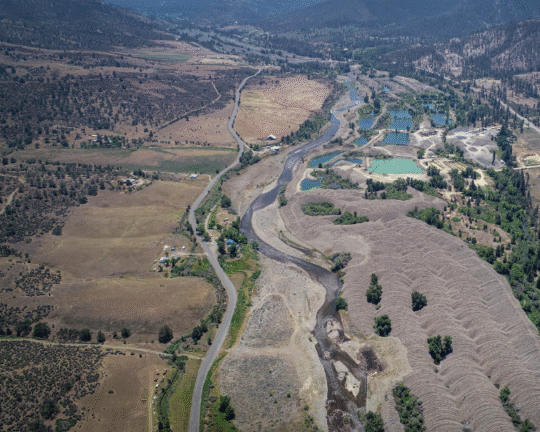
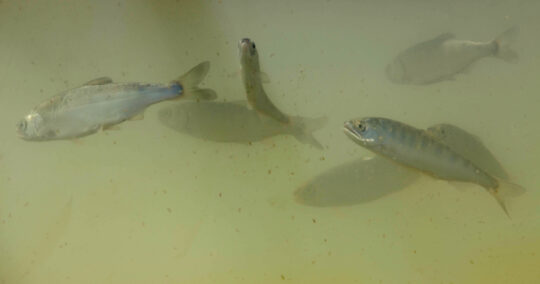
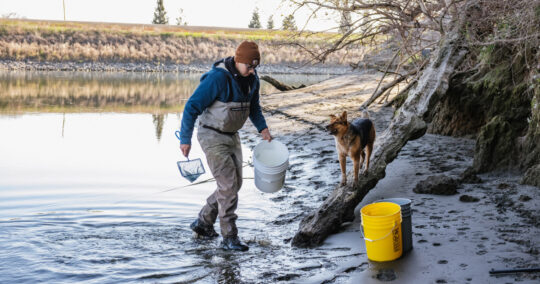
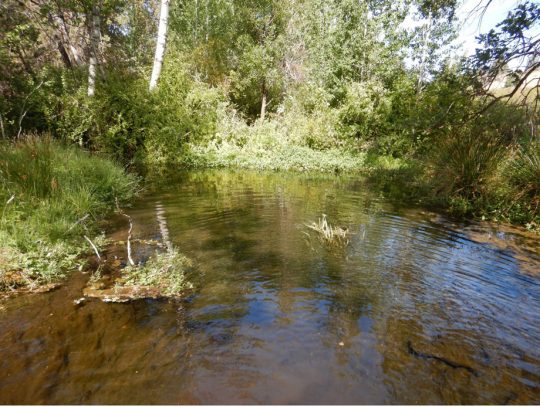
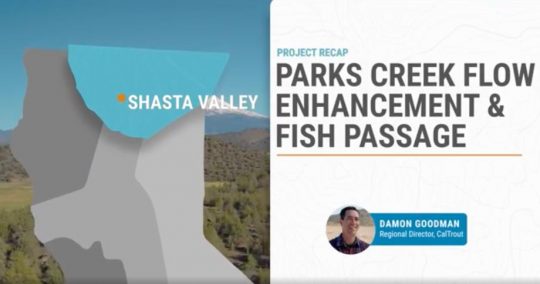
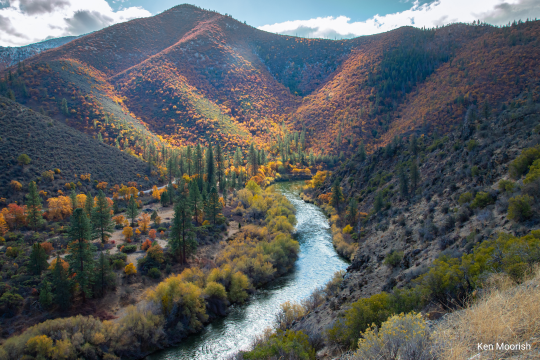
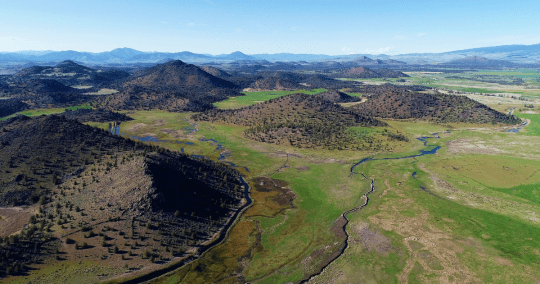
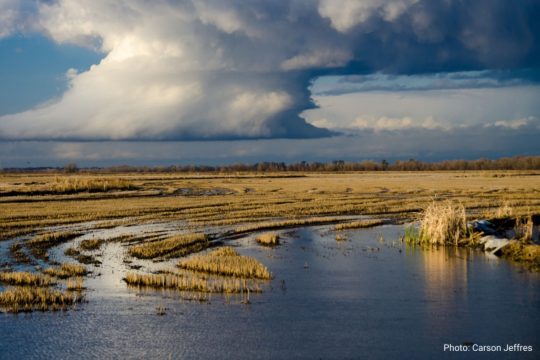
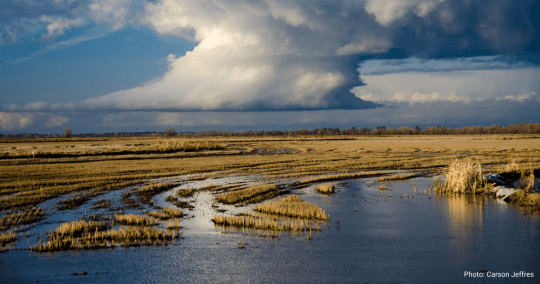
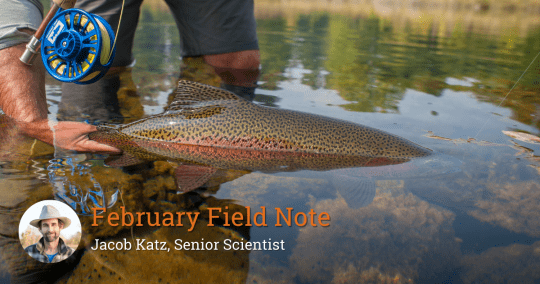
 Human use of streams, lakes, and surrounding watersheds for recreation has greatly increased with population expansion. Boating, swimming, angling, off-road vehicles, ski resorts, golf courses and other activities or land uses can negatively impact salmonid populations and their habitats. The impacts are generally minor; however, concentration of multiple activities in one region or time of year may have cumulative impacts.
Human use of streams, lakes, and surrounding watersheds for recreation has greatly increased with population expansion. Boating, swimming, angling, off-road vehicles, ski resorts, golf courses and other activities or land uses can negatively impact salmonid populations and their habitats. The impacts are generally minor; however, concentration of multiple activities in one region or time of year may have cumulative impacts.
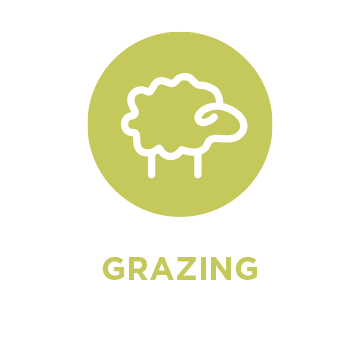
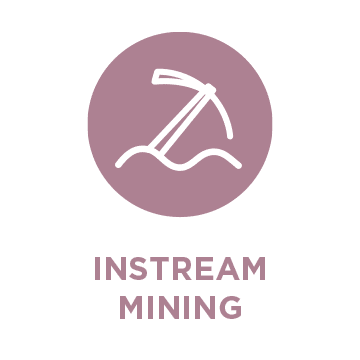
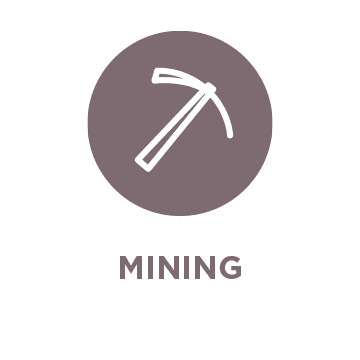
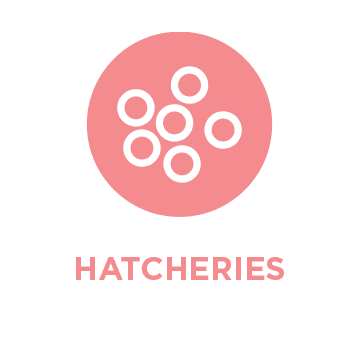
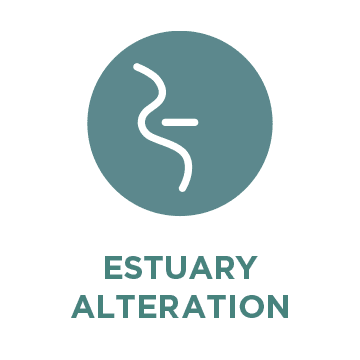



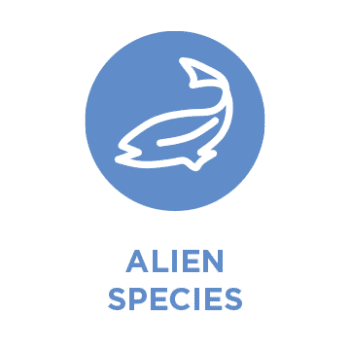

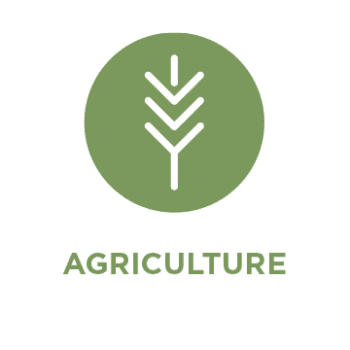
 Dams block access to historical spawning and rearing habitats. Downstream, dams alter the timing, frequency, duration, magnitude, and rate of change of flows decreasing habitat quality and survival.
Dams block access to historical spawning and rearing habitats. Downstream, dams alter the timing, frequency, duration, magnitude, and rate of change of flows decreasing habitat quality and survival.
